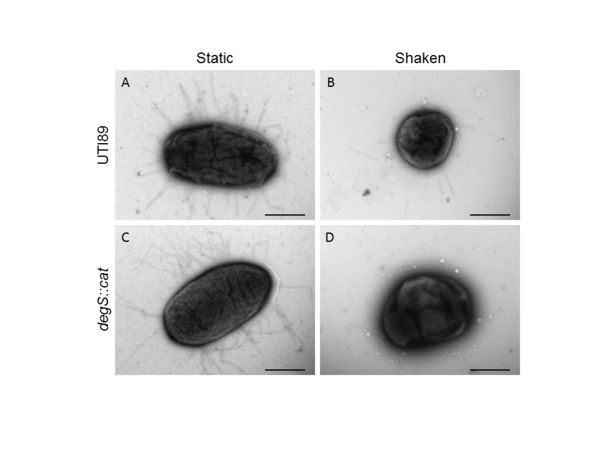Characterization of a UPEC DegS Mutant in vitro and in vivo
(1) Cardinal Ritter College Prep High School, St. Louis, Missouri; Young Scientist Program Summer Focus, Washington University in Saint Louis, Missouri, (2) Division of Biology and Biomedical Sciences, Washington University in St. Louis, Missouri
https://doi.org/10.59720/14-034
Escherichia coli DegS is an integral inner membrane protein that breaks down incorrectly assembled proteins and helps regulate the σ ᴱ stress response pathway. When degS is deleted, approximately 200-fold more outer membrane vesicles (OMVs) are produced. As OMVs contain sections of the outer membrane and proteins from the periplasm, they may play a role in the virulence of E. coli. To test whether degS or OMVs play a role in uropathogenic E. coli (UPEC) virulence, we characterized a degS mutant. We found that the degS deletion did not affect the morphology of the bacterium, but did result in decreased virulence in vivo and in vitro. When we tested our mutant in a murine model of cystitis, mice infected with degS::cat bacteria had a 100-fold decrease in bacterial titers in the bladder at 24 hours post-infection. In vitro binding and invasion assays showed no difference in the ability to bind to host cells, but a significant decrease in the ability of mutant bacteria to invade cells. Together, these data suggest that degS deletion decreases the virulence of E. coli and that an increase in OMV production may be a detriment to virulence. Future studies can separate the role of degS and OMV production in UPEC virulence.
This article has been tagged with: